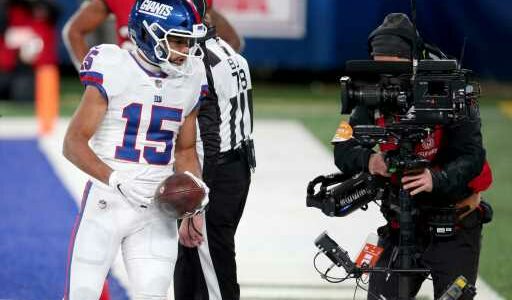
In Long-Term NFL Extension, Disney Could Start To Do End-Run Around Pay-TV Bundle, Wall Street Analysts Expect
After the $100 billion-plus rights deals were announced Thursday by the NFL, Wall Street analysts agreed that the league was the big winner. Still, they do see some rights holders being able to score despite the hefty price.
Disney in particular gained attention for paying the lowest increase from the previous deal to the new one and also for securing exclusive streaming and Super Bowl rights. Monday Night Football will also be able to “flex” more desirable games into its schedule, unlike in the past.
While the scenario of ESPN leaving the traditional ecosystem for streaming has been floated for a while – and the company insists it is premature – the new deal could provide a foundation for it. The NFL deals stretch out through 2033, meaning there will be a continuing evolution of consumer behavior and industry dynamics. No radical shifts are expected with ESPN right away, but the consensus view from analysts is that the traditional bundle will shrink dramatically, putting yet more pressure on distribution fees. As Robert Kraft, New England Patriots owner and chairman of the NFL’s put it, “Streaming is truly the future.”
Stocks of key stakeholders like Amazon, Comcast, Disney, Fox and ViacomCBS aren’t moving much as investors process the news. Shares are flat to up 1% during a fairly sedate trading session. In a flurry of research notes heading into the weekend, analysts tallied up the pluses and minuses, with cord-cutting a primary theme.
Amazon claimed rights to Thursday Night Football, the first time a streaming service will have an exclusive piece of the NFL pie. Yet deals have a heavy linear TV component. Sundays, for example, both in the afternoon and in primetime, will still favor CBS, Fox and NBC, with single streaming-only games each season slated for NBCU’s Peacock and ESPN+.
Michael Nathanson of MoffettNathanson pointed out that Fox and Disney “appear unlikely to blow up their models and instead use these rights to drive higher per sub rate increases.” But that strategy could be difficult when the companies have to negotiate carriage renewals with MVPDs.
“Over time, this approach could likely accelerate cord-cutting, which will then force Disney and Fox into more difficult choices,” he wrote. “Does ESPN+ finally evolve from ESPN linear? Will Fox ownership decide to sell their digital rights to a third party streaming service?”
He adds that there is a new way for cord-cutters to put together their own NFL-only package. “A consumer could easily cut the cord and stream games on Thursday, Sunday and Sunday night for less than $15 per month over the five+ months of the NFL season,” Nathanson notes.
Michael Morris of Guggenheim pointed out that Disney “saw the biggest expansion in rights, with what we estimate as the most modest cost increase.” That will afford the company some maneuverability when it comes to migrating viewers from linear to streaming, which has been a core priority over the past few years. Agreed Nathanson, “Disney appears to be the only company that can claim that they were able to get more value from the new deal than the old deal.” He added, “Aside from the NFL, the only other winner from this new deal was Disney.”
Ben Swinburne of Morgan Stanley said one of the main benefits for Disney is the ability to simultaneously stream NFL games on ESPN+ and also have some exclusives there. It could also, under the deal, stream games “in a full DTC version of ESPN, should it decide to make that strategic pivot,” he wrote.
Rich Greenfield of Lightshed Partners (which, unlike investment banks, analyzes but does not trade stocks) didn’t flag any imminent change for Disney. But he has long been predicting the demise of pay-TV, often appending his Twitter posts with the hashtag #goodluckbundle. In a blog post, he said the NFL renewals will only accelerate the trend.
“Mark it down,” Greenfield wrote. “March 18, 2021 is the day the multichannel TV bundle died. Sure the bundle will be around for many years to come, but the future trajectory is now clearer than ever and the proverbial ‘floor’ on multichannel video subscribers is far lower than we predicted. What we thought was a 40-50 million subscribers floor due to the NFL is probably now closer to 20 million, as more and more marquee sports content (especially NFL content) becomes available outside the legacy multichannel bundle.”
Swinburne echoed that sentiment in his note. “From House of Cards to Monday Night Football, there’s no turning back now,” he wrote. “The overall takeaway is that the NFL is following the path we have seen first in scripted TV, then original films, followed by kids and unscripted content, and increasingly news and sports. In essence, the industry is devaluing the linear bundle and investing aggressively in individual streaming services. This has led to increased levels of cord-cutting but rapid uptake in streaming. How will this end?”
Even for rights holders not especially invested in direct-to-consumer streaming, at least not the subscription kind, there is plenty of upside, some analysts maintain. Fox in particular can benefit from using the NFL to fund its ambitions in sports betting, according to Tuna Amobi of CFRA Research. “While Fox’s estimated annual price tag of over $2 billion per year seems to have almost doubled over its last NFL deal,” he wrote, “we see a seminal deal that could prove to be pivotal for its nascent gaming business and further entrench its long-term sports rights amid continued audience fragmentation and escalating streaming wars.”
Fox, which is yielding Thursdays to Amazon, could also opt to sell off its digital rights to a third-party streamer. The company last year acquired ad-supported streaming service Tubi and will add NFL programming to it as well as what a Fox release described as “condensed games.”
Read More About:
Source: Read Full Article